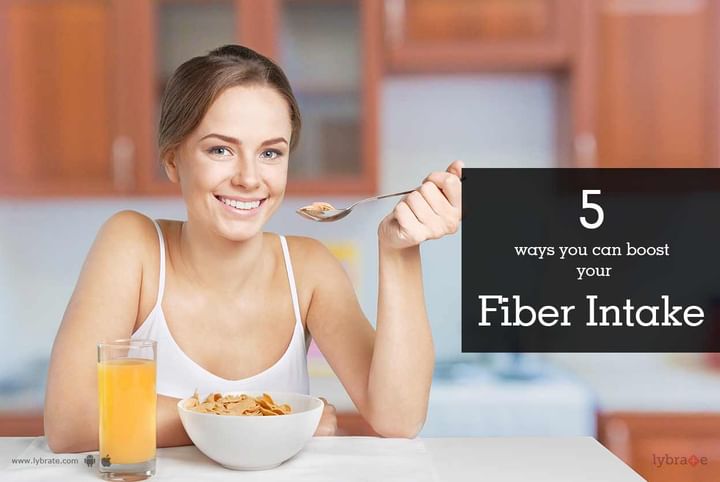5 Ways You Can Boost Your Fiber Intake
The human body is designed to process foods with the help of fiber. The benefit of fibers is being recognized widely, and people are being advised to increase the fiber content in their food. On an average our body requires 25 to 30 g of fiber per day.
The body requires two types of fibers, soluble and insoluble. The soluble ones absorb water during digestion, contribute to stool bulk, and are believed to reduce cholesterol levels. Fruits, vegetables, legumes, oats, and barley are good sources of soluble fibers.
The insoluble ones are required for good movement of food through the intestines. These are also found in fruits, vegetables, and whole grains like wheat, rice, barley, oats, etc. It takes a little planning to ensure your food is fibrous, but the benefits are a lot and long lasting.
Follow some of the following simple steps and you will see them for yourself:
- Vegetables: On a lighter note, make sure each meal of yours is as colorful as possible. Include good amount of carrots, radish, greens, legumes, tomatoes, cabbage, and any other vegetable that you like in each meal. This ensures that you get all the fiber and nutrients that you want in a meal. Baked, boiled, raw choose any form, that you like.
- Fruits: It is advisable to eat a raw fruit as compared to having its juice. The fiber content gets reduced when you convert it to a juice. Try not to discard the peel, unless it is not edible at all, pineapple or jackfruit for example. Fruits, along with vegetables, form the most natural and best source of fiber. About 5 servings of fruits and vegetables per day will get you all the fiber you need for a day that is 25 to 30 g per day. Berries, pears, prunes, figs, apples, oranges, apples, pears, mangoes, pineapples - take your pick.
- Whole grains: Whether you are picking up bread, noodles, cookies, or a packet of pasta, make sure they are made of whole grains and not refined flour. Include one cereal in your breakfast. Oats, barley, wheat germ powder, flax seeds can all be good sources of fiber. Replace white rice with brown rice to get more fiber.
- Legumes: Incorporate fiber rich legumes in your daily meal, such as beans, lentils, peas or puree them for interesting dips. Adding legumes help you with the required amount of fiber intake for your body along with regular and smooth bowel movements.
- Water: Though not a direct contributor to fiber, increasing the water intake makes the fiber from the above mentioned foods more effective. It promotes better food passage through the intestines and contributes to better stool. It also reduces the bloated feeling that you get with increased fiber.
Try to gradually make these small changes to your diet and you will see the benefits almost immediately. Try including more fibrous foods to also prolong your hunger pangs, breakfast being the best way to start.



+1.svg)
